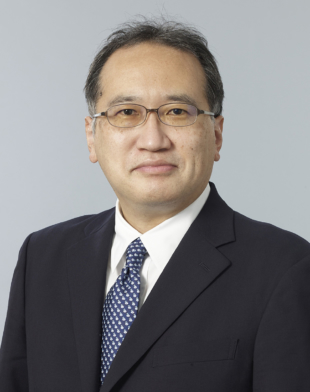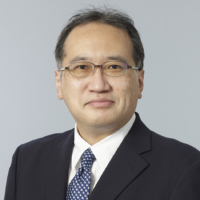Semiconductors are a key technology for achieving digital transformation and green transformation, and they are also strategically important goods from the perspective of economic security and Japan’s overall industrial competitiveness. It is critical that Japan captures the increasing global demand for these chips.

Advanced semiconductors are especially essential for promoting the development and utilization of generative artificial intelligence in Japan. In the future, it will be important to strengthen the competitiveness of the industry as a whole by creating an ecosystem for designing and manufacturing advanced semiconductors, with an eye toward developing and utilizing generative AI as a use case, including in the automotive and other “edge-computing” domains (where data is processed closer to its source).
Various countries are undertaking large-scale measures to secure semiconductor manufacturing capacity. The Japanese government has been providing support through legal reforms and financial assistance, with a budget of approximately ¥4 trillion ($27 billion) allocated in the past three fiscal years. In the supplementary budget for fiscal 2023 established last November, approximately ¥2 trillion was allocated for semiconductor and AI-related projects.
With the budget established, we have promptly started executing several projects, including the second factory of Japan Advanced Semiconductor Manufacturing, which is a joint venture between Taiwan Semiconductor Manufacturing Co. and several Japanese companies, in Kumamoto Prefecture, and additional support for the Rapidus project in Hokkaido.
In the meantime, construction of the first JASM factory, which we decided to support two years ago, is progressing at an astonishing speed and scheduled to start chip deliveries by the end of the year as planned.
As for the Rapidus project, which is tasked with achieving mass production of next-generation logic semiconductors, research and development is making smooth progress and mass production is set to begin in 2027. In addition, TSMC, Samsung, Rapidus and Intel are either engaged in or planning to engage in R&D in Japan for advanced packaging technology, which is considered key to improving performance. Thanks to these projects, we are gradually filling in the missing pieces in our country’s microchip supply chain.
As such, semiconductor-related companies have a strong willingness to invest in Japan. I receive daily inquiries from many companies, including foreign ones, expressing their desire to invest in Japan. We think the reasons for this momentum are not only the swift and large-scale support from the government, but also Japan’s changing position in terms of geopolitical risk, and the resilience of our supply chain for semiconductor manufacturing equipment and components, where Japan has strengths. Japanese companies still hold a large global market share in manufacturing equipment and component materials, and particularly in advanced fields, they possess many technologies that are indispensable in the supply chain.
We must continue to attract investment by maintaining and improving our technological advantage in these fields, while also fulfilling our supply responsibilities to other like-minded countries and regions. Therefore, the government is also actively working to support capital and R&D investment in these areas.
In addition to supporting facility and R&D investment, it is necessary to invest in the talent that supports these efforts. The Ministry of Economy, Trade and Industry is establishing consortiums for talent development through industry-academia-government collaboration in each region, working on talent development while encouraging the involvement of companies.
We also plan to launch projects for the development of highly skilled personnel for R&D, among other efforts. We would also like to invite skilled foreign engineers to come to Japan.
It is important to utilize advanced microchips in user industries such as automotive and telecommunications. Particularly, application-specific integrated circuits are becoming increasingly important in terms of performance and power consumption. Because Japanese companies have been lagging in the utilization of ASICs, the ministry is launching multiple projects to support the design and development of these chips and to build an ecosystem involving user industries.
These support measures for the semiconductor industry have already shown significant ripple effects. For example, using the first JASM factory as a starting point, a positive cycle of investment and wage increases is forming in the Kyushu area, with starting salaries over ¥50,000 higher than the national average and record-breaking growth in investment. The semiconductor industry is expected to act as a trigger for revitalizing the entire Japanese industry.
Japan’s semiconductor industry, once the world’s No. 1, has experienced a significant decline in market share over the past 30 years and has fallen behind in advanced areas such as logic semiconductors. However, the world is once again turning its attention to Japan and investing in it. We will continue to sustain and accelerate this momentum. The Cabinet has made a decision to provide focused investment support, including large-scale and strategic investments in mass production and R&D for the AI and semiconductor sectors over multiple years while ensuring the necessary financial resources.
Japan’s semiconductor policy is still only halfway there, and the real challenge begins from here. The government will continue to make every effort to revive the semiconductor industry to enhance Japan’s overall international competitiveness and ensure economic security through a resilient supply chain.



